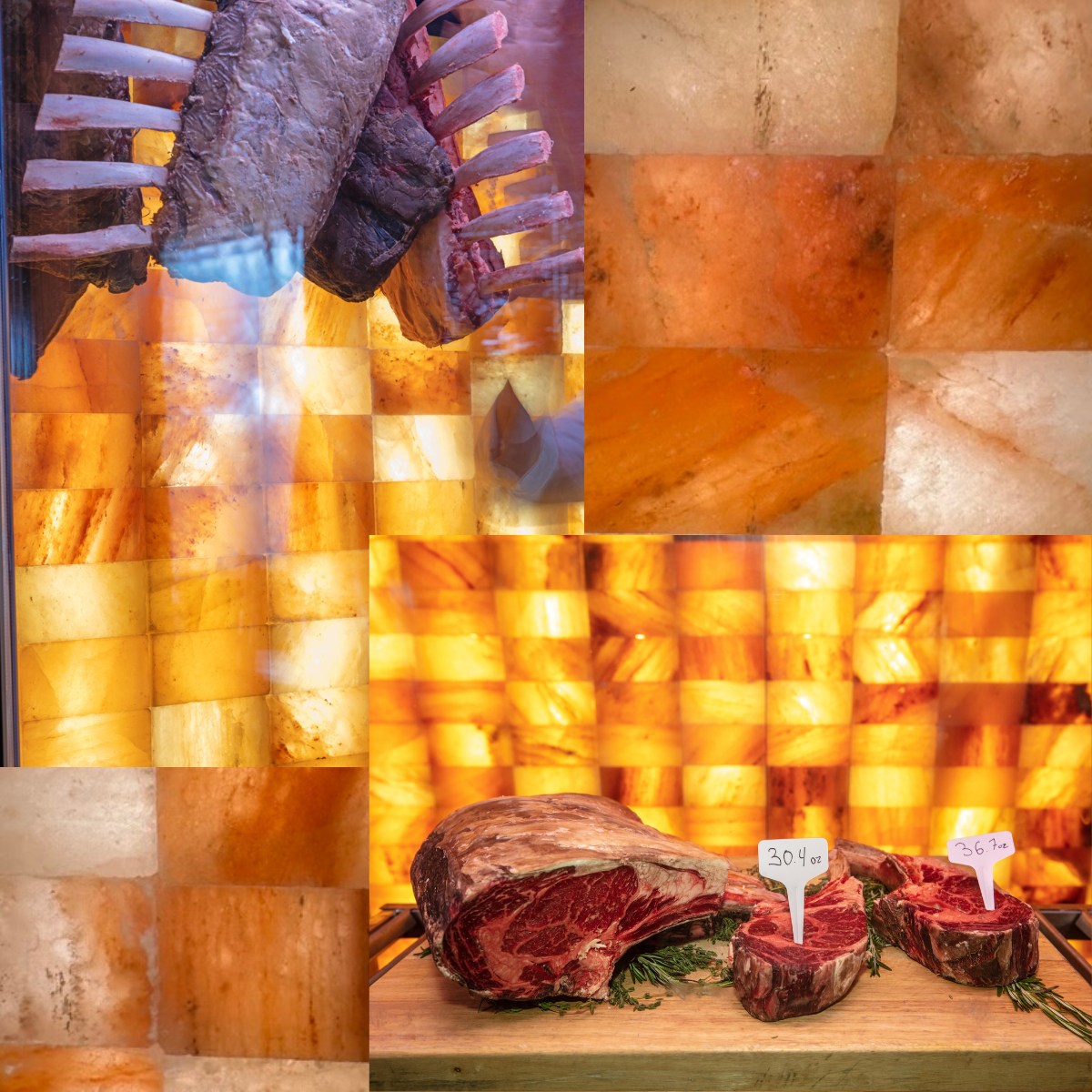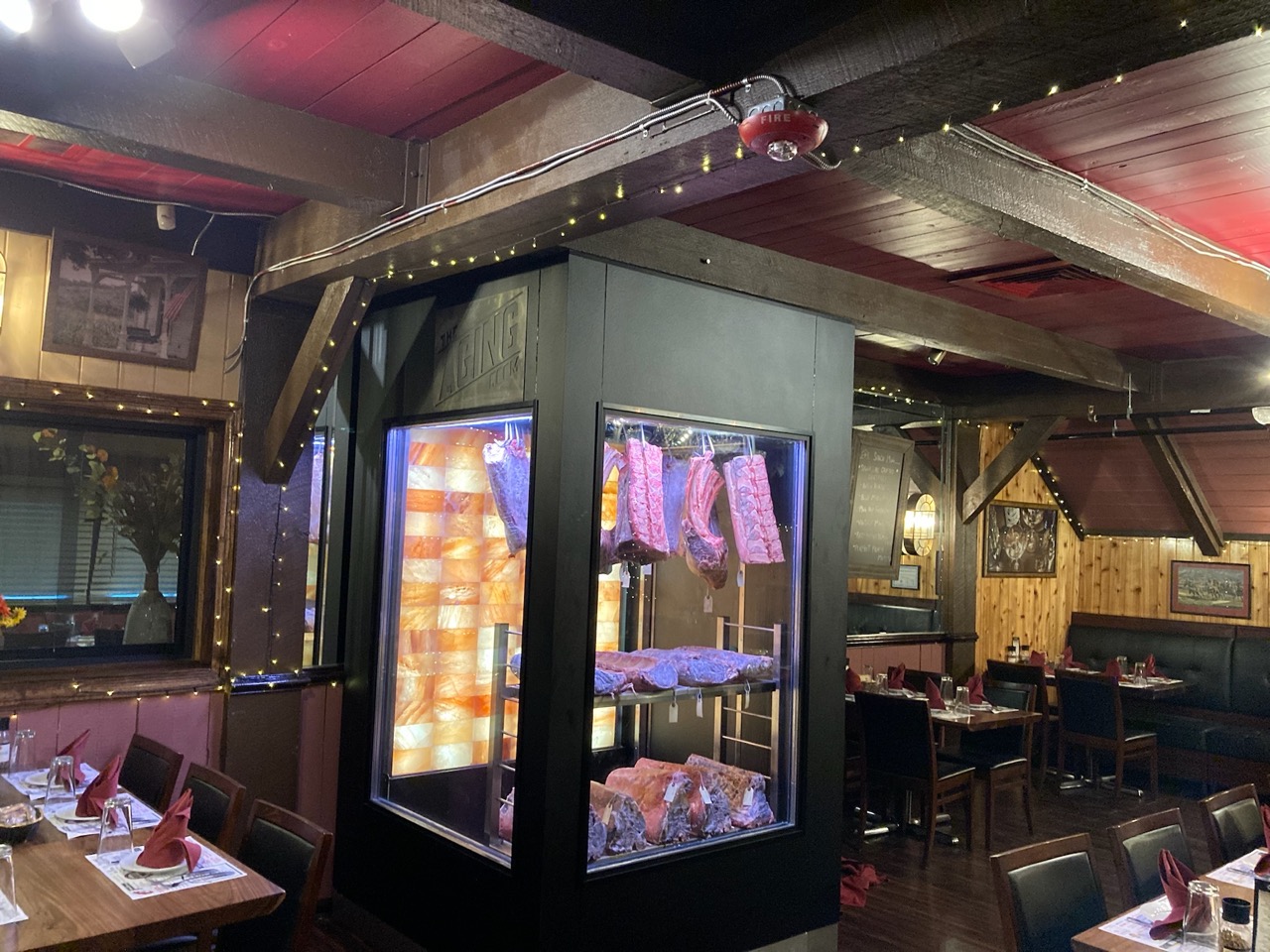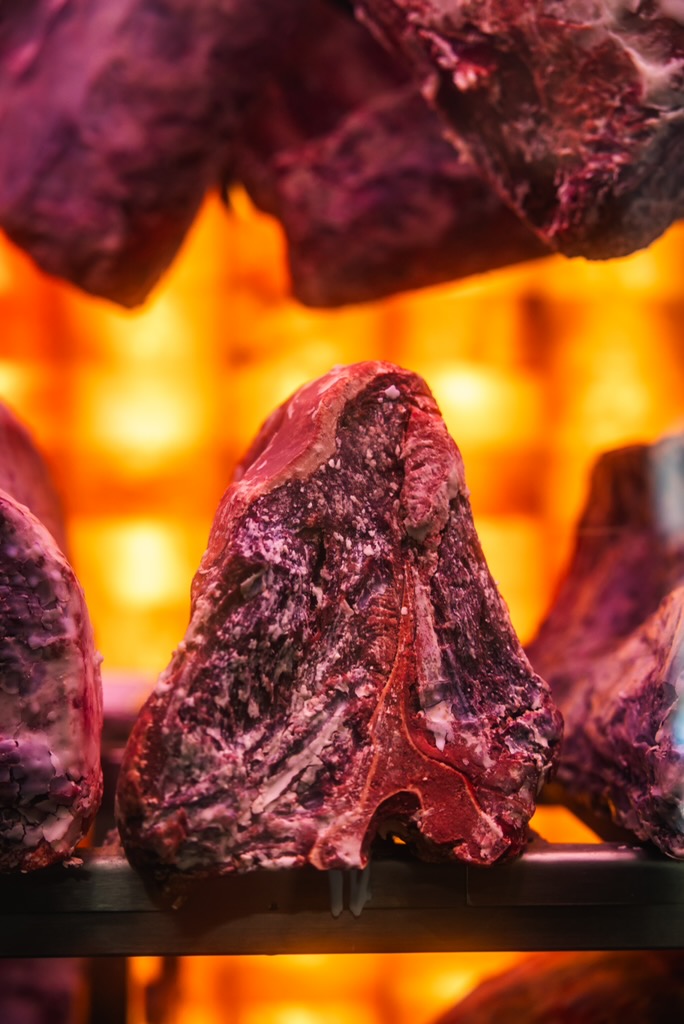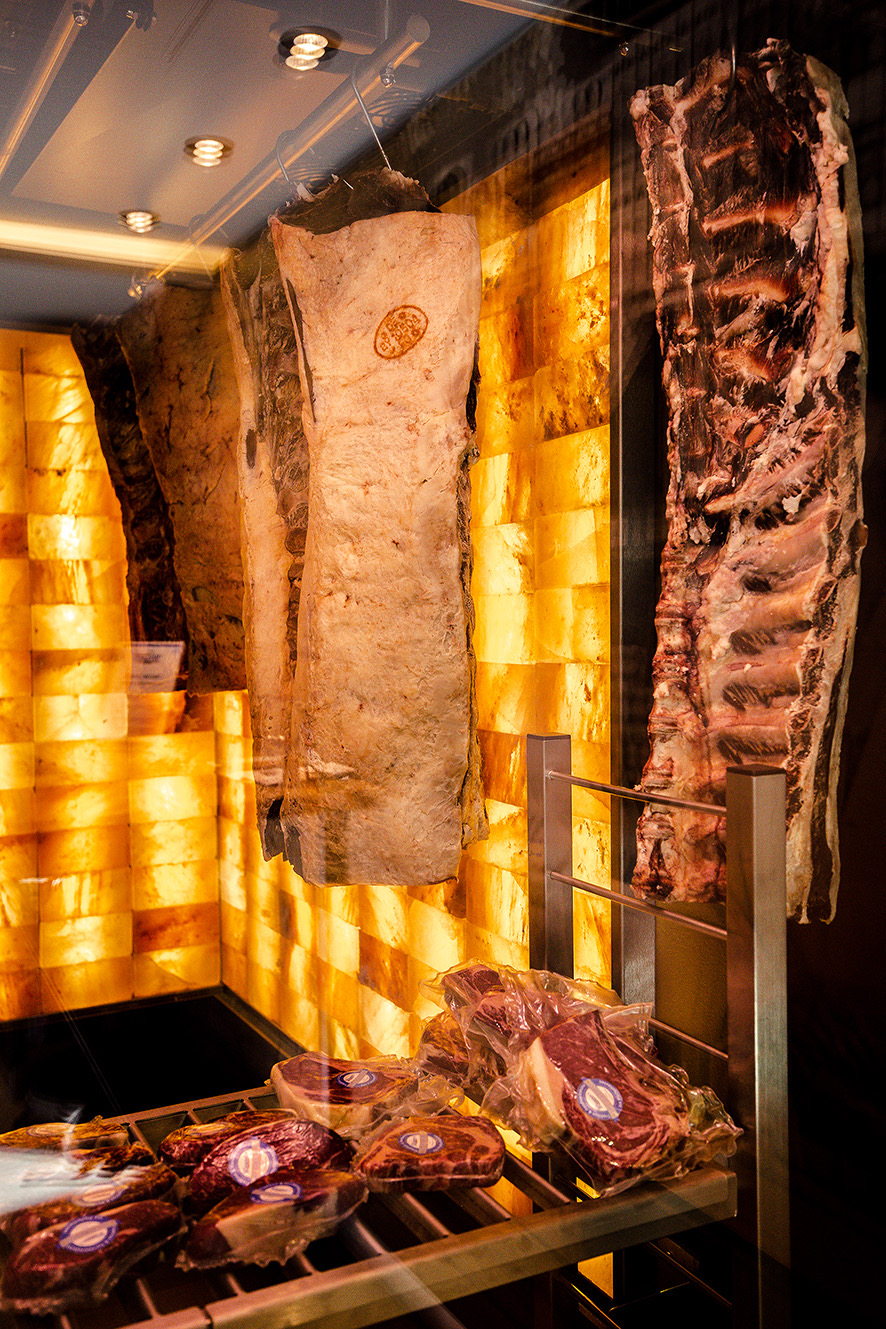
UV Light vs. Himalayan Salt in Dry Aging Meats: Effects on Flavor and Quality
Dry-Aging is a revered technique that enhances the flavor and texture of meats, particularly beef, through controlled aging in a refrigerated environment. Two key factors that significantly influence this process are UV light and Himalayan salt. Let's explore how each of these elements impacts the dry-aging process and ultimately affects the taste and quality of the meat.
UV Light: A Double-Edged Sword
UV (Ultraviolet) light can be beneficial in certain applications but poses challenges in dry-aging meats:
Oxidative Effects: UV light exposure accelerates oxidation in fats and proteins, potentially leading to off-flavors and a decline in overall taste quality. This oxidative stress can disrupt the delicate enzymatic breakdown of muscle fibers crucial for achieving the desired flavor profile during dry aging.
Rancidity Risk: Exposure to UV light increases the risk of fat rancidity, which results in undesirable sharp and unpleasant flavors. This contradicts the objective of dry-aging, which is to concentrate and enhance flavors through controlled enzymatic activity.
Texture Concerns: While primarily affecting flavor, UV light's oxidative effects can indirectly impact texture, altering the perceived mouthfeel of the meat and compromising its desired tenderness.
Himalayan Salt: Enhancing Flavor and Safety
In contrast, Himalayan salt offers several natural advantages when used in dry-aging meats:
Hygroscopic Nature: Himalayan salt has a high affinity for water molecules in the air. When used in the dry-aging process, it effectively controls humidity levels around the meat. This humidity regulation is critical as it prevents the growth of harmful bacteria while facilitating beneficial enzymatic processes that tenderize the meat.
Antimicrobial Properties: Salt, including Himalayan salt, naturally inhibits the growth of harmful bacteria. This antimicrobial action creates a safer aging environment, allowing meats to age longer and develop more complex flavors without the risk of spoilage.
Flavor Enhancement: Beyond its functional benefits, Himalayan salt subtly enriches the flavor profile of dry-aged meats. Its mineral composition adds depth and complexity, complementing the natural richness of the meat and enhancing overall eating satisfaction.
Conclusion
In the realm of dry-aging meats, the choice between UV light and Himalayan salt significantly impacts the final flavor and quality outcomes. While UV light may offer sterilization benefits, its potential risks to flavor and texture necessitate careful control and management. Himalayan salt, on the other hand, provides a natural solution that enhances flavor, ensures safety through antimicrobial properties, and supports the essential process of humidity control.
Practical Application
For producers and enthusiasts seeking superior results in dry-aging, Himalayan salt emerges as the preferred choice due to its naturalness, effectiveness in maintaining flavor quality, and straightforward application in dry-aging chambers. By leveraging Himalayan salt's benefits, including humidity regulation, antimicrobial support, and flavor enhancement, one can achieve a safer, more controlled aging environment that optimizes the development of desired flavors and textures in meats.
As the demand for exceptional flavor experiences grows, understanding the role of environmental factors like UV exposure versus the benefits of Himalayan salt becomes crucial in mastering the Art and Science of Dry-Aging Meats.
Also, there is important question safety of both methods, Himalayan salt is generally considered safer for dry-aging meats compared to UVC light. Here’s why:
Natural and Non-invasive: Himalayan salt is a natural mineral product with hygroscopic and antimicrobial properties. It regulates humidity, inhibits harmful bacteria, and enhances flavor without introducing artificial components.
Minimal Risk: When used correctly, Himalayan salt poses minimal risk to the quality and safety of dry-aged meats. It supports the natural enzymatic processes and helps create an optimal aging environment.
UVC Light Considerations: UVC light, while effective for sterilization, can potentially alter the flavor and texture of meats due to oxidative effects. It requires precise control to avoid unintended consequences.
Therefore, Himalayan salt is preferred in dry-aging for its natural benefits and lower risk profile compared to UVC light, making it a safer choice for maintaining the quality and integrity of the meat throughout the aging process.
Learn More About The Aging Room® Dry-Aging Chamber
By combining traditional aging processes and modern technology, The Aging Room® uses state-of-the-art climate control equipment with Himalayan salt to create an aging-friendly, natural microclimate to dry-age steaks to their fullest potential. The meat rests and ripens in a natural environment, never frozen, vacuum-sealed, or chemically preserved, allowing restaurants, butcheries, and retail shops to utilize every part of the meat, including pellicle and bones. Learn more about the benefits of The Aging Room® Chamber.
Other news
-
 News
Why Full-System Certification Matters in Dry Aging Equipment — And What Sets The Aging Room® Apart
18 Jul 2025
News
Why Full-System Certification Matters in Dry Aging Equipment — And What Sets The Aging Room® Apart
18 Jul 2025
-
 News
Understanding the Art of Aging: How Dry Aging with Himalayan Salt Transforms Meat Quality
01 Jul 2025
News
Understanding the Art of Aging: How Dry Aging with Himalayan Salt Transforms Meat Quality
01 Jul 2025
-
 News
UV Light vs. Himalayan Salt in Dry Aging Meat: What Really Matters for Flavor and Quality
03 Jun 2025
News
UV Light vs. Himalayan Salt in Dry Aging Meat: What Really Matters for Flavor and Quality
03 Jun 2025